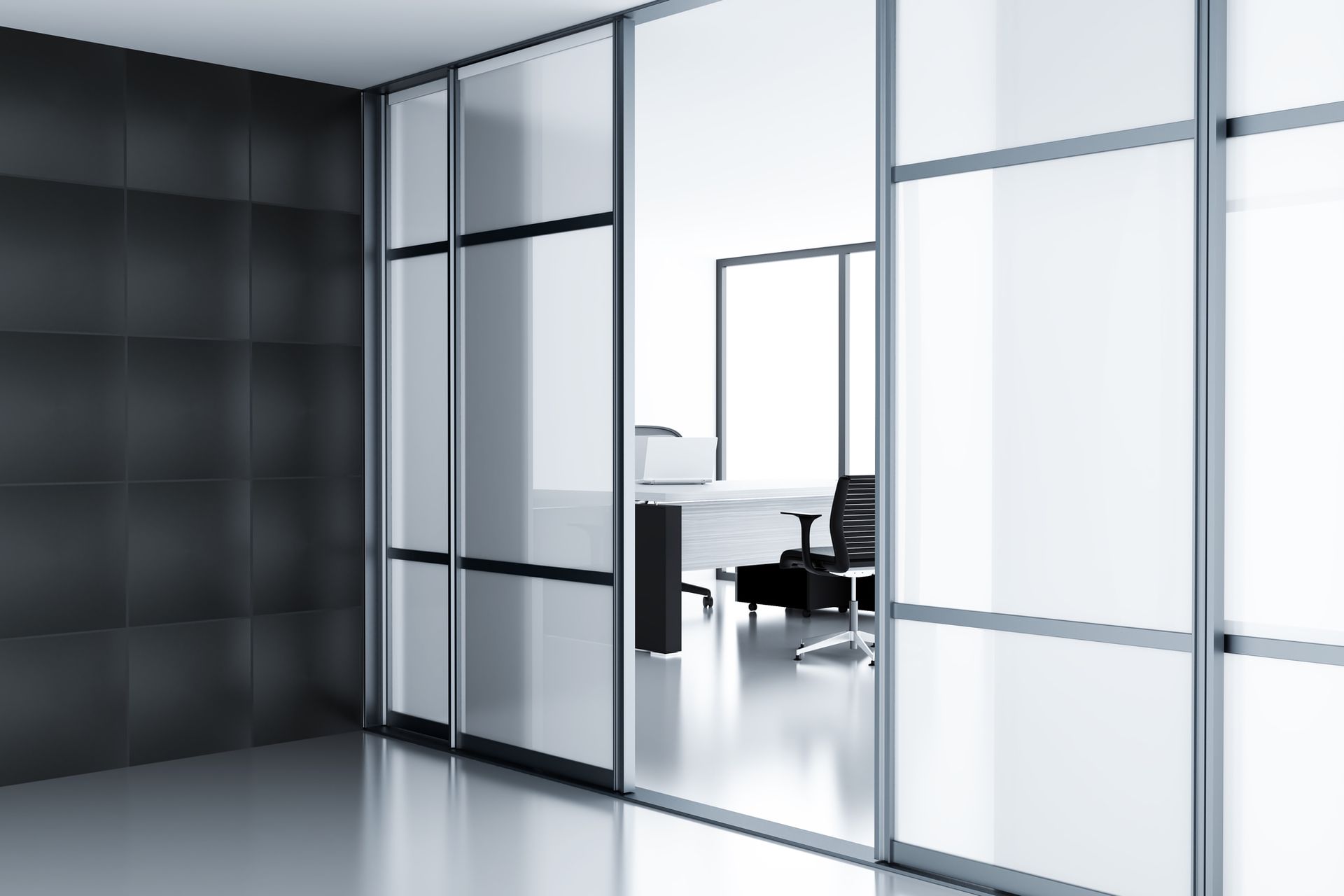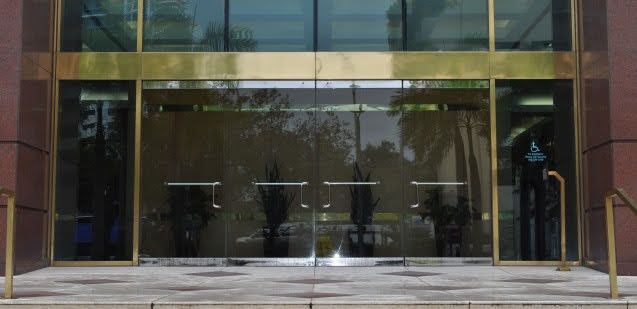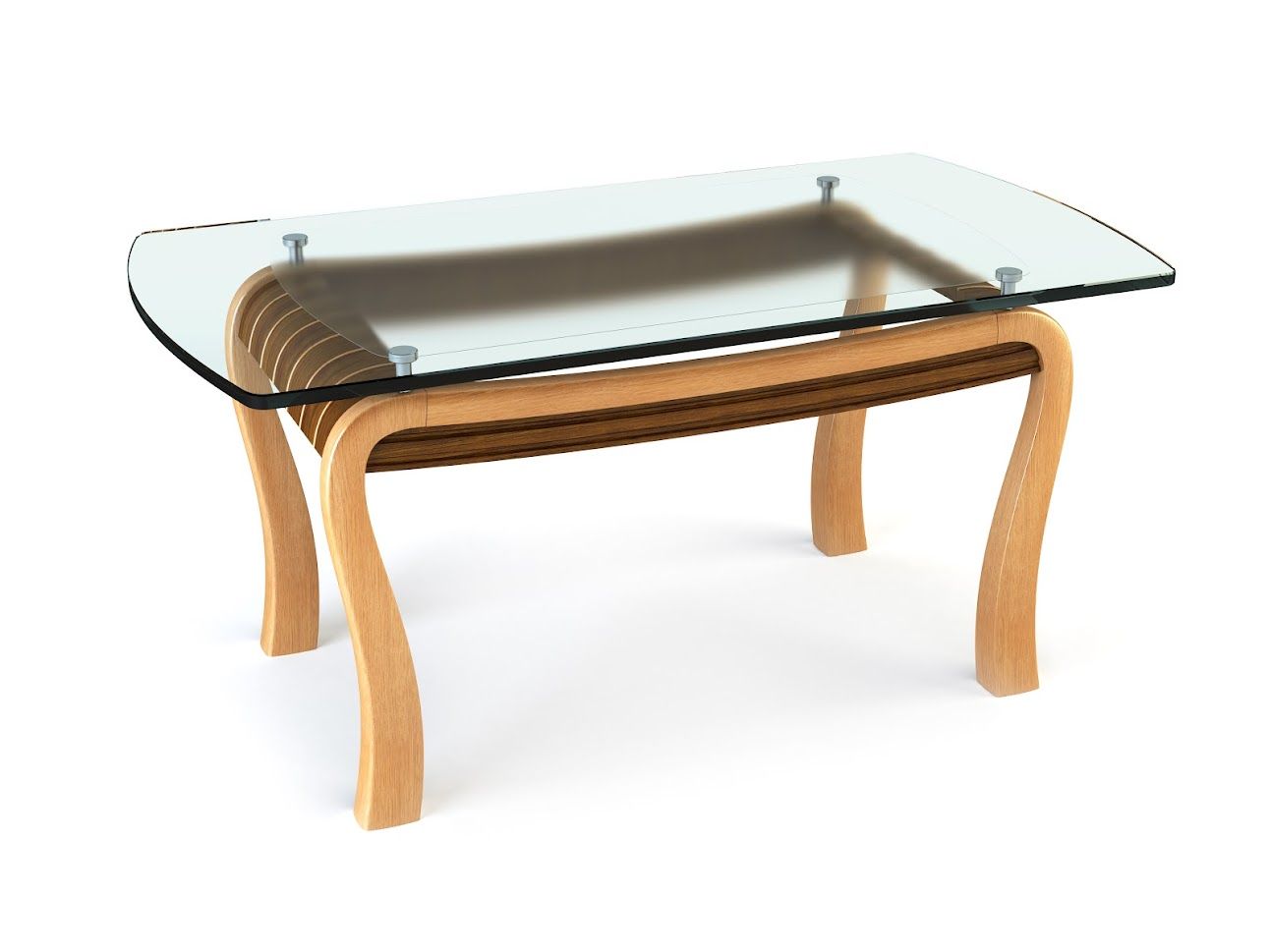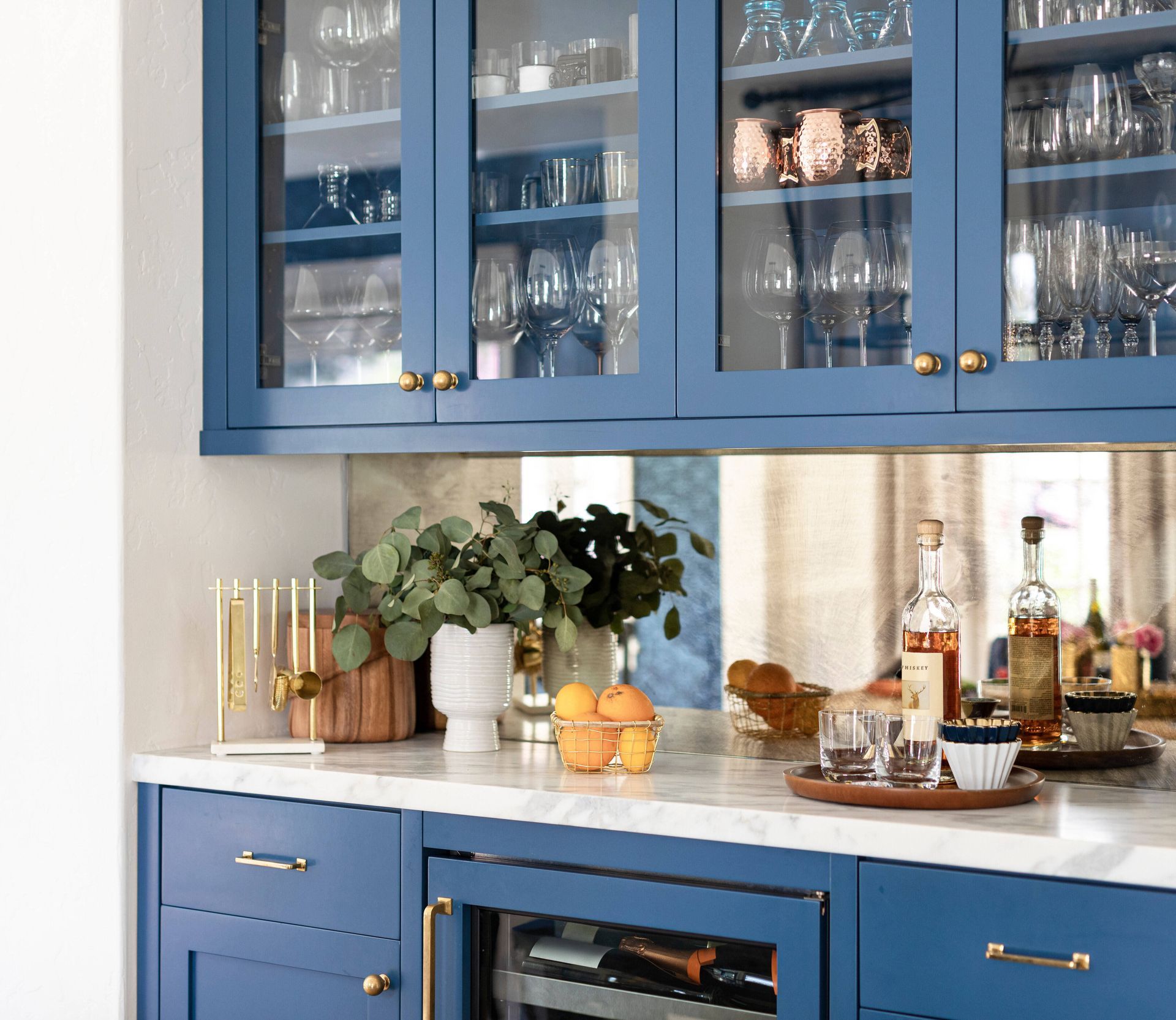Architectural Terms Guide
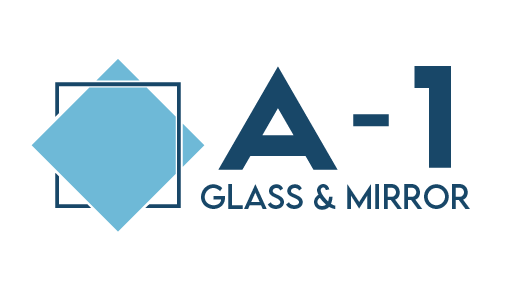
Architectural Terms Guide
We realize how difficult dealing with glass can be. Whether you’ve “encountered” the neighbor kid’s baseball, are looking to upgrade your dream bathroom after the kids leave for college, or simply can’t stand looking at those foggy outdoor windows anymore, A-1 Glass is here to make the process easy. Please find in this guide a partial index of architectural terms.
ADA - The Americans with Disabilities Act became law in 1990, and requires that public spaces accommodate persons with disabilities. Commercial construction requires certain ADA accommodations be made in doors and door hardware. The most common accommodation is a 10” bottom rail in commercial doors, meant to limit the damage to the door glass by persons using wheelchairs.
Annealed - The process by which glass is created, consisting of high heat and precisely timed cooling. “Normal” or “standard” glass is called annealed glass in the industry. Annealed glass will fragment into large uneven shards if broken.
Anodize - Most commonly used in conjunction with aluminum, anodization is a protective layer of oxide which prevents corrosion of the underlying metal. Applied through an electrolytic process, metal forms the negative (or anodic) electrode of an electrolytic cell. Anodization is typically done by dipping large sticks of metal into a tank of liquid chemicals for a preset amount of time.
Arris - Defined as the edge formed by the meeting of two curved or flat surfaces, an arris is the shape at the edge of a piece of glass. An industry term, arris is often confused with the more common term “bevel,” although the two have very different meanings. Whereas an arris is on the edge of a piece of glass, a bevel is on the face of glass.
Astragal - A convex, or semi-circular, molding or strip of material that separates two flat sections. Commonly seen on columns astragals are also applied to the minimize the gap between two leaves of a pair of doors or windows.
Bead- When silicon or other sealant is applied in a line to join two pieces of material for weatherproofing or other reasons, it is known as a bead.
Bevel - A slope on the face of a piece of glass, which leads into the edge. Bevels can be various sizes and designs. Most commonly seen on mirrors, typical bevel dimensions are ½”, 1” or 2”. Differs from an arris in that an arris is on the edge of glass, while a bevel is on the face of glass.
Borrowed Lite - An industry term for a window from one room looking into another. The light is “borrowed” from the adjoining room.
Building Envelope - The entirety of the materials used to separate the interior of a building from its exterior. Consisting of walls, windows, doors, concrete, drywall, framing, cladding, and moisture barriers, the building envelope greatly influences the energy efficiency, or R-value,
of a building.
Butt-Glazed - A method of glazing. Butt-Glazing is the industry term for two pieces of glass that directly touch, or “butt up” against each other. Common in interior applications, butt glazing creates unobstructed sightlines that are free of the intermediate vertical aluminum or steel pieces that usually separates glass panes.
Cladding - Any metal, wood, vinyl, or other material applied to the outside surface of a building for performance or decorative purposes.
Clerestory - Pronounced “clear-story,” clerestories are windows which are high up on walls, close to the ceiling. While transoms are directly above doors, clerestories are separated from the door by a section of wall.
Closer - A piece of hardware situated at the top or bottom of a door or door frame which automatically closes the door at a prescribed rate. Typically used in conjunction with a holder in commercial doors.
Division 08 - The portion of commercial construction devoted to openings and fenestration. Construction is divided into many divisions, beginning with ground leveling and other civil work, and ending with small ornamental touches such as paint and exit signs. Division 08 typically takes place after about ½ to 2/3rds of construction has taken place.
EPD - Environmental Product Declarations are documents offered by companies which detail their environmental impact and steps taken to reduce that impact.
Emissivity - The measure of the ratio of radiation emitted by an object when compared to a “blackbody” from physics academia. The scale is between 0 (for a perfectly reflector) to 1 (for a perfect emitter). Low-Emissivity glass (or Low-E for short) is a type of glass to which a very thin coat of silver has been applied, reducing the energy lost during winter by nearly half.
Fenestration - The technical term for anything related to openings.
Film - Window film may be one of a variety of materials that are surface-applied to glass. Architecturally, window film is typically used to create privacy or reduce radiation transmission. For example, a hotel owner may elect to apply a translucent film to the windows of a fitness studio in order to prevent unwanted stares, while simultaneously allowing light into a space.
Fire-Rated Glass - Glass systems can be used in place of sprinkler systems to reduce or prevent the spread of fire and heat. Usually very expensive, many types of fire rated (or F/R) glass exist, and are primarily used in commercial construction where the extension of sprinkler systems is impractical or impossible.
Glass Stops - The thin strips of wood, vinyl, or metal which hold glass in the window or door. While myriad styles exist, vinyl and aluminum stops are most common. Wood glass stops can be problematic, especially in older houses, as wood is fragile and easily damaged during routine replacement.
Grid - A decorative element used to create a symmetrical appearance in windows and doors. Usually attached to the surface of the glass, (or inside the air gap for insulated glass units), grids are meant to mimic older colonial style architecture. While contemporary grids are purely decorative and may come in a large variety of styles, grids used in older homes were often structural mullions.
Hardware - All handles, faucets, towel bars, locks, thresholds and other metal devices with specialized purposes are known as hardware, or HW for short. Special care must be taken to ensure the finish, or color, of hardware matches in a room.
Holder or Hold-Open - A piece of hardware meant to allow a door to remain open. Typically used in conjunction with a closer for commercial doors.
Insulated Glass (IG or IGU) - Insulated, or “double-pane” glass is a sealed and airtight unit comprised of two pieces of glass separated by an air space, commonly filled with an Argon/Oxygen mixture. IG units feature a wide variety of glass types, thicknesses, and air spaces, and are a cost-effective way to reduce energy usage in Summer and Winter.
Knee Wall - Also called a “pony wall,” a knee wall is a wall that begins at the floor and extends only part way to the ceiling. Commonly used to separate spaces in home and office settings, knee walls are often utilized to support window glass when privacy is desired.
Laminated Glass - Glass may be laminated with various types of laminate materials in order to confer special properties to the glass, such as ballistic or wind-borne debris resistance. Laminated glass is most commonly seen in commercial use to prevent broken glass from falling out of an opening.
LEED - Leadership in Energy and Environmental Design is a set of criteria widely adopted in commercial construction. Various LEED criteria are often required, and may mandate use of recycled content, use of local manufacturers, use of environmentally friendly sealants, use of inert materials, and others.
Lite - The industry term for a window, either interior or exterior.
Louver - A set of angled flat strips in a door or wall, intended to allow light and air to enter while simultaneously maximizing privacy and minimizing solar radiation.
Low-E - A type of glass to which a very thin layer of silver has been applied to reduce the emissivity of the glass, thereby reducing the energy lost to radiation. See “Emissivity.”
Low-Iron Glass - Iron is commonly added to glass to reduce the transmittance of ultra-violet (UV) radiation. Low-iron glass offers a more “clear” appearance with minimum greenish or bluish tint, however it is primarily used in interior applications due to its minimal effect on solar radiation. Low-iron glass is almost always seen in displays, and is not a functional architectural product.
Mastic - Mirror mastic is a special glue used to attach mirror glass to a surface. If mirror mastic specifically is not used, conventional adhesives or glue will de-silver the mirror over time, creating the familiar blotchy pattern on older mirrors that is reminiscent of partially erased pencil.
Monolithic Glass - A glass unit comprised of one single piece of glass. Used to differentiate single-pane glass from double-pane insulated glass units.
Mullion - A vertical or horizontal bar between the panes of glass on a window. Mullions are structural components and support some of the weight of glass. Mullions differ from muntins; mullions provide structural support, while muntins are purely decorative and provide no support.
Muntin - A vertical or horizontal bar applied between the panes of glass on a window. Muntins are decorative components which do not support any weight of glass. Muntins differ from mullions; while muntins are purely decorative and provide no support, mullions provide structural support.
Opening - The technical term for the place a window or door will eventually be installed. Prior to installation, a precisely measured hole or “opening” exists in the building’s drywall, framing and exterior finish.
Panic Device - A panic device/bar/hardware is the push bar which allows easy opening of a door; most commonly encountered at commercial buildings such as gyms, stores and malls.
R-Value - Defined as the temperature difference between between two surfaces of the same material (for example the warm interior and cold exterior surfaces of a wall or piece of glass), the amount of energy loss is inversely proportionate to the R-Value, and is extremely important when considering insulation and building envelope. E.G. a wall with R-45 confers far less energy loss than a wall rated R-6.
Safety Backing - A film applied to the rear surface of mirrors. Usually utilized in gyms, safety backing keeps mirror glass adhered to the wall, even if broken by an errant weight or barbell.
Safety Glass - While the meaning of the term “safety glass” will vary depending on context, it usually refers to tempered or heat-strengthened glass.
Sash Balance - Mechanisms installed on both sides of single- or double-hung windows, allowing for smooth opening and closing.
Sidelite - A window to the side and directly adjacent to a door. Commonly seen at the entrances to commercial and residential buildings.
Spandrel Glass - Glass which is painted on the back side (usually white) with an opaque solution. Spandrel glass can be used to create a “whiteboard” type surface on which to write, or most commonly, on large commercial buildings to hide mechanical equipment, concrete, wiring, or other features found between floors.
Stile - The vertical metal, wood, or plastic sides of a door which lie at either side of a door’s glass. Doors are typically Narrow Stile (NS), Medium Stile (MS), or Wide Stile (WS). Wide Stile doors are typically utilized in commercial applications with heavy usage, such as a grocery store entrance. Narrow Stile doors appear more contemporary and elegant, and are used when aesthetics are emphasized more than performance in a building’s design, for example at the interior door of the company president’s office.
Sweep - A plastic or rubber piece attached to the bottom of a shower door which prevents water from dripping and escaping to the outside of the shower enclosure. Sweeps are sometimes utilized in commercial doors, especially in regions where inclement weather is common.
Temper - A specialized process by which glass is heated and rapidly cooled in order to make it stronger, and minimize potential injury if broken. Tempered glass will “explode” into “a million tiny pieces” when broken, and is commonly used in both commercial building and automobiles, as well as occasional residential applications such as in doors.
Transom - A window which is directly above a door.
Vision Glass - Another term for the standard clear glass found in most windows and doors, vision glass is also sometimes called “float glass.”
While it is not necessary for one to memorize all these terms, it is valuable to be familiar with the above words and concepts in order to reduce or eliminate any potential ambiguities later in your project. Regardless of your project’s size and scope, the glaziers and staff at A-1 Glass & Mirror are happy to assist in any questions you may have related to architectural glass and metal.
Reliable – Quality - Friendly
Since 1955
A-1 GLASS & MIRROR
5465 SW WESTERN AVE STE. J
BEAVERTON, OR 97005
T: 503-646-9641 F: 503-643-9439


Browse Our Website
Contact Information
Phone: (503) 646-9641
Email: info@a1glassandmirror.com
Address: 5465 SW Western Ave Suite J Beaverton, OR 97005
Office Hours:
- Mon - Fri
- -
- Sat - Sun
- Closed
License #: 236963 - Oregon
A1GLAGM787N9 - Washington
